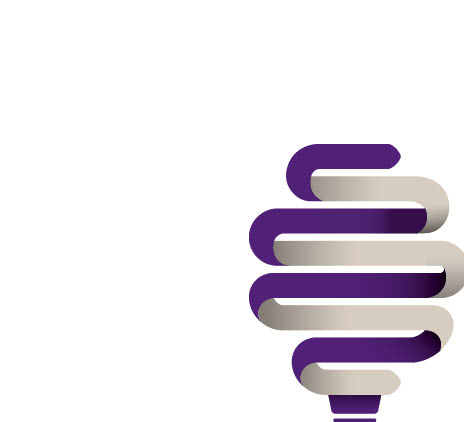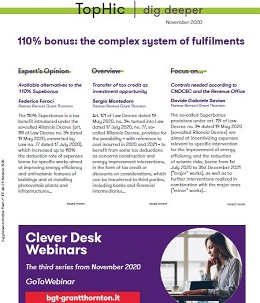-
Transactional advisory services
Find out more about the transactional advisory services of Grant Thornton Financial Advisory Services
-
Valuations
Find out more about the valuations services of Grant Thornton Financial Advisory Services
-
Mergers and acquisitions
Find out more about the merger and acquisition services of Grant Thornton Financial Advisory Services
-
Forensic and investigation services
Find out more about the forensic and investigation services of Grant Thornton Financial Advisory Services
-
Recovery & reorganisation
Find out more about the Recovery & reorganisation services of Grant Thornton Financial Advisory Services
-
Business risk services
Find out more about the business risk services of Grant Thornton Financial Advisory Services
-
Business consulting
Find out more about the business consulting services of Grant Thornton Financial Advisory Services
-
Capital market
Capital market
-
Corporate and business tax
Find out more about our corporate and business tax services.
-
Direct international tax
Find out more about our direct international tax services.
-
Global mobility services
Find out more about our global mobility services.
-
Indirect international tax
Find out more about our indirect international tax services.
-
Transfer pricing
Find out more about our transfer pricing services.
-
Litigation
Our lawyers and accountants can manage all defense measures provided not only by the Italian law, but also by EU regulations and conventions
-
Family business
Find out more about our Family business services.
-
Legal
The client can be assisted in every need and with the same care both on important operations or disputes and on simple matters

-
Back office outsourcing
Find out more about our Back office outsourcing services
-
Business process outsourcing
Find out more about our business process outsourcing services.
-
Compilation of financial statements
Find out more about our compilation of financial statements services.
-
Tax compliance
Find out more about our tax compliance services.
-
Electronic invoicing
Find out more about our electronic invoicing services
-
Electronic storage
Electronic storage is an archiving procedure that guarantees the legal validity of a digitally stored electronic document
-
Revaluation of corporate assets
Find out your civil and fiscal revaluation of tangible, intangible and financial assets
-
Payroll
Complete and customized payroll service, integrated with digital solutions and compliant with Italian and international regulations.
-
Labor consultancy
We help Italian and international companies manage all aspects of their workforce.
-
HR & Payroll Advisory Services
We review contracts, payroll, and risks for extraordinary transactions and we assess tax, labor, and safety risks in outsourcing contracts.
-
Extended services
We provide integrated digital tools to simplify HR management.
-
HR Infinity Portal
The HR Infinity Portal is Zucchetti’s platform designed to centralize communication between the company and its employees.
-
Cybersecurity
GT Digital helps clients structure information security management internal functions, also through partially or totally outsourced functions
-
Agile and Programme Management
GT Digital provides support in the adoption and implementation of different portfolio management
-
Robotic Process Automation
Our “BOT Farm” can rely on digital workers able to help clients in routine activities, allowing employees to deal with more added-value activities
-
Data strategy and management
GT Digital can support clients in seizing the opportunities offered by Big Data, from the definition of strategies to the implementation of systems
-
Enterprise Resource Planning
We support clients in selecting the most appropriate ERP System according to their specific needs, helping them also understand licensing models
-
IT strategy
GT Digital supports clients in making strategic choices, identifying innovation opportunities, comparing themselves with competitors
-
IT service management
We can support with software selection and with the implementation of dedicated tools for the management of ICT processes
-
DORA and NIS 2
The entry into force of the DORA Regulation and NIS2 represents a major step towards the creation of a harmonised regulatory framework
Art. 121 of Law Decree dated 19 May 2020, no. 34, turned into Law dated 17 July 2020, no. 77, so-called “Rilancio” Decree, provides for the possibility – with reference to cost incurred in 2020 and 2021 – to benefit from some tax deductions as concerns construction and energy improvement interventions, in the form of tax credit or discounts on considerations, which can be transferred to third parties, including banks and financial intermediaries, departing from the ordinary dispositions on debt transfer.
These measures were introduced by the Government with the aim of relaunching the Italian economic system, which has been heavily affected by the Covid-19 pandemic emergency. Particularly important are the provisions on the transfer of credit generated from works for building renovation, energy efficiency improvement, adoption of aseismic measures, installation of solar power plants and of electric vehicle charging equipment (so-called “110% Superbonus”).
Specifically, besides the possibility to obtain a direct discount on considerations due for works, the abovementioned provision has introduced the possibility to convert tax deductions related to such interventions into tax credit and then to transfer such credit to third parties, including credit institutes and other financial intermediaries. Transferees can, in turn, further transfer credit to other parties, including credit institutes and other financial intermediaries.
The possibility to transfer credit under para. 1 of the article at issue explicitly departs from the current regulation, which, in case of building renovation and energy efficiency improvement works, admits the transfer of credit deriving from the tax deduction or its utilization as a contribution amount.
Therefore, in order to foster the economic recovery, the Government is focusing on the building industry, which has always been a driver to growth. The legislator has strengthened the impact of the provision, by giving taxpayers the possibility to finance the whole cost incurred, also through some mechanisms for the transfer of the tax credit deriving from deductions, thus having the possibility to obtain loans for works from credit institutions by transferring the tax credit to them, or to obtain by the construction company in charge of the works a discount equal to the whole amount due.
In detail, the regulation provides that credit be transferred without recourse and provides for the non-application of the general offsetting limits provided for tax and social security contribution credit equal to 700,000 Euro (increased to 1 million Euro only for 2020), as well as of the 250,000 Euro limit applicable to tax credit to be indicated in the RU section of the tax return.
Transferees can utilize the acquired tax credit starting from day 10 of the month following the correct receipt of the Revenue Office notification and, in any case, not before 1st January of the year following that in which concerned costs were incurred.
The possibility to transfer tax credit to third parties can also represent a great opportunity for both credit transferees (banks, financial intermediaries, etc.) and transferring parties (taxpayers), who can immediately capitalize their credit without waiting for ordinary five-year payback period.
Moreover, the “SiBonus” platform, made available by Infocamere, is now online, creating a contact between taxpayers that want to transfer their tax credit and entities that are interested in acquiring it. The platform, already operating in North-Eastern Italy, was created thanks to the collaboration with Unioncamere Veneto, and Lorenzo Tagliavanti, president of Infocamere, stated: «In a scenario where middle and large companies have already started to benefit from the transfer of credit, our aim is to make this market more accessible to small enterprises».
Transfer of credit must be made electronically by an intermediary being qualified to electronic submission of returns and must concern the remaining amounts that have not been deducted. Once the transfer option is exercised, this refers to all remaining non-deducted amounts and is irrevocable. In order for the transfer to be effective, a notification must be submitted to the Revenue Office from 15 October 2020 and by 16 March of the year following that in which the relevant costs are incurred.
In order to benefit from the transfer of credit, it is also necessary to obtain a stamp of approval of information included in the documentation attesting the meeting of the requirements that give right to apply for the Superbonus. Pursuant to art. 35 of legislative decree no. 241/1997, the stamp of approval must be issued by intermediaries qualified for the electronic submission of tax returns, i.e. chartered accountants, accountants, labour consultants, and advisors at CAF offices (tax aid offices).
Therefore, the stamp of approval is necessary in order for the transfer of credit to be successful. Bernoni Grant Thornton can assist the involved parties with this process, in order to ensure that the transfer of credit is concluded effectively. The stamp of approval should be issued with caution, through a structured logic process that allows assessing the adequacy of:
- the subject that will benefit from the allowance;
- the type of property concerned by interventions;
- the type of interventions performed;
- the relevant cost incurred;
- the certifications, statements, and self-declarations needed.
At the end of the assessment process, the professional in charge can issue the stamp of approval, attesting the actual right to tax credit.


